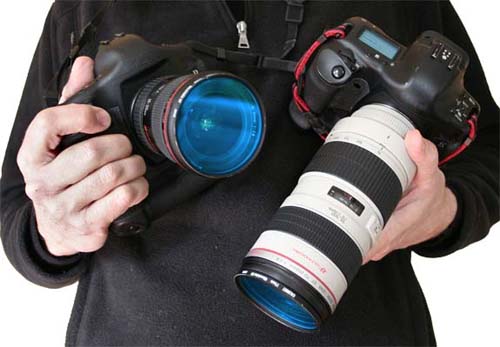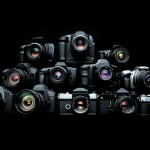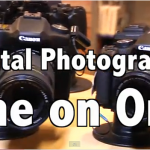
Many photographers prefer to buy a camera or lens in brand new condition. This is a common, because we’ll be getting the latest model, the best condition of equipment, and the satisfaction of getting a warrantied product. If the available budget is sufficient, then buying a camera or lens in new condition may be the best choice. However, if funds are a bit of a problem, buying a used or second-hand camera can be a wise choice. What aspects should be considered when buying new or used lens?
Tips to buying a new camera or lens:
1. Determine the specifications you need from the camera
The desired type and brand should fit within the available budget range. To get a price range, contact a few different camera shops and visit their websites.
2. Visit a few camera shops to try out a few different brands and types of camera to get the feel of the variations so as to be certain which would best suit you. Selection of type and brand is very personal / private, so purchase the brand and type that best suit your needs (specifications, ergonomics, control, ease of use).
3. Get the best lens that fit your budget
The lens of the camera is what will shape and determine the quality of the photos, so I feel that the lens is more important than the camera body being used. For information on the quality of lenses, visit Photodo PhotoZone or web site.
But buying a used / secondhand equipment should also be considered. In addition to lower prices, there are several reasons to support the buying of secondhand equipment, including:
you want a camera or lens with certain specifications, but you deem it too expensive to buy in new condition; or you want a backup camera
(For use with a lens or other type of film). Here is a guide to buying a used camera (especially the auto focus cameras):
Tips for buying used camera:
1. Check the general condition of the camera, which will give you an idea of how the previous owners cared for and used the camera. Avoid cameras with external or visible defects.
2. Turn on the camera controls, and check whether all the functions and control buttons or dials of the camera runs properly.
3. Try the autofocus function with a lens attached to it.
4. View from the camera viewfinder and make sure the image and viewfinder display (if any) is evident.A bit of dust or dirt particles is very normal and common, but defects /other foreign objects found in the viewfinder should be avoided.
5. Check the condition and function of the LCD panel. Try toggling the exposure mode to ensure that each mode is displayed well.
6. Check the shutter on a variety of shutter speeds, from the fastest to slowest. Listen and you should be able to hear the difference in time in accordance with the shutter speed setting during the shooting process.
7. Remove the lens and peer through the inside of the camera from the front end of the lens. Check the condition of the glass / mirror for any scratches or cracks, and whether the glass opens and closes the back properly in every shot. Also check the condition of the focusing screen (at the top of the glass)to see if it’s in good condition and are free of scratches.
8. Examine the state of the lens mount on the body. Make sure there is no distortion or damage to the mount due to collision, and that the entire pin or gear /lever on the mount is in good condition.
9. Open the back of the camera, shutter and see situation. All shutter blades should be in average condition and without scratches. Set the camera at slow speed, and press the shutter button to view and make sure the shutter opens in full state. Check also the film rail conditions and pressure-plate, which should be in a scratch-free state.
10. Ask the store employee to install a test film in the body. Check whether the camera loads, winds, and rewinds the film properly.
11. Open the battery compartment, to ensure there is no pin contacts damage caused by battery leakage.
12. If possible, ask for a warranty period (1 or 3 months) from the seller.
Tips for buying used lenses:
1. Check the general condition of the lens, and avoid the lens with real disabilities.
2. Shake the lens. Not too hard, but strong enough to hear and detect if there are elements within the lens glass that is not installed properly or even fell apart.
3. Check the front and rear lens carefully. Avoid lens with front / rear that are scratched, or cracked.
4. Peer inside the lens using the light source (eg lamp). A little dust is common, and a little fungus (most likely) can be cleaned or serviced. But avoid the lens with a thick layers of fungus, or has foreign particles in it.
5. Put the lens on the camera (preferably yours) and make sure the entire camera and lens functions runs properly.
6. Check that the lens aperture setting close fit in the shooting. Open the back of the camera, set in Bulb mode, and press the shutter button. Perform this test on the entire range of the lens aperture.
7. Check on the lens autofocus function, whether running properly and accurately.
8. Check the manual focus ring on the lens. Make sure the manual focus ring works fine, without sound and turns smoothly when focussed in manual focus mode.
9. If it’s a zoom lens, check whether the zoom lens mechanism runs smoothly without any problems. Avoid lens with a zoom mechanism that’s faltering, too loud, or too loose.
10. Inspect the filter thread on the front of the lens, and make sure there is no damage or congestion. When in doubt, do a test by installing a filter on the lens.
11. If possible, ask for a warranty period from the seller.




